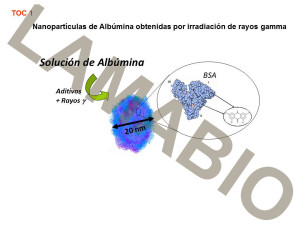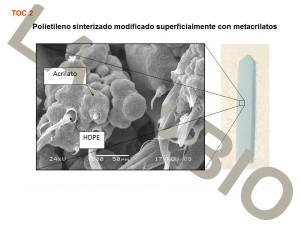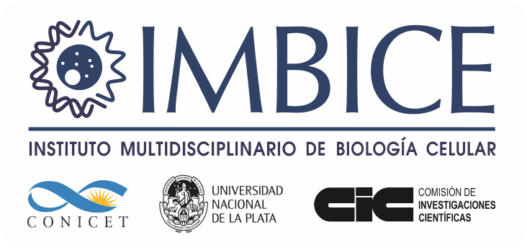Publications
Radiat. Phys. Chem. 81 (2012) 1417–1421.
Radiation Synthesis of Seroalbumin Nanoparticles
- L. Soto Espinoza, M. L. Sánchez, V. Risso, E. E. Smolko and M. Grasselli
Abstract
Synthesis of small polymeric particles can be achieved by ionizing radiation technology via intramolecular crosslinking by gamma rays onto soluble polymer molecules in random coil conformation. Differently soluble globular proteins are naturally densely packed structures. Fragmentation and aggregation processes have been reported for irradiated globular proteins solutions with ionizing radiations.
In this work we describe protein-based nanoparticles prepared by gamma irradiation of a soluble and globular protein, such as seroalbumin, as the basic building blocks keeping its original conformational shape. Protein nanoparticles in the range of 20 to 40 nm were detected after gamma irradiation of the aqueous protein solution in the presence of polar organic solvents. Nanoparticles were characterized by DLS, fluorescence, and UV and CD spectroscopy, showing that the protein molecules keep their general three-dimensional structure into the created nanoparticle.
Keywords: nanoparticle, albumin, radiosynthesis

Radiat. Phys. Chem. 79 (2010) 241-5
Immobilization of bacteria in microgel grafted onto macroporous polyethylene
- A. Trelles, F. Quiroga, C. Britos, E.E. Smolko and M. Grasselli
The development of ‘‘Green Chemistry’’ requires new materials to replace the conventional organic chemistry by biological catalysts, to produce fine chemicals in an environmentally friendly manner. Microbial whole cells can be directly used as biocatalysts, providing a simple and cheap methodology since enzyme isolation and purification are avoided. High-density polyethylene (HDPE) is a very stable polymer though it can be activated by gamma radiation to induce grafting. Glycidyl methacrylate was grafted onto macroporous HDPE and PP in the range of 1–6%, proportional to the initial monomer concentration. Grafted polymers were further chemically modified with ethylenediamine to generate a cationic hydrogel of micron-size thickness onto the internal polymer surfaces. Modified polymers were able to immobilize Gram-positive and Gram-negative bacteria that can catalyze a chemical reaction as efficient as free cells do.
Keywords: Simultaneous grafting; Glycidyl methacrylate; Biocatalysis; Polyethylene

- Membr. Sci. 321 (2008) 350-355.
High-speed protein purification by adsorptive cation-exchange hollow-fiber cartridges
- Ventura, M. Fernandez Lahore, E. E. Smolko and M. Grasselli
Abstract
Novel cation-exchange adsorptive membranes were assessed according to their protein adsorption capacity and permeation flowrate. Maximum static adsorption capacities for the three main egg-white proteins, lysozyme, ovoalbumin and conalbumin, were 140, 88 and 66 mg/ml, respectively. However, membranes showed an inverse relationship between permeation flowrate and static protein adsorption capacity. Two size cartridges (membrane volume of 0.42 and 3.5 ml) were built using the selected membrane. An adsorptive cross-flow cartridge was tested to recover and purify lysozyme from an egg-white solution. Breakthrough curves developed using a pure lysozyme solution showed a dynamic-to-static capacity ratio of 0.6, which was reduced to 0.4 during lysozyme recovery from egg-white solution in cross-flow mode. Total process cycle for the enzyme recovery and purification was in the range of 10–15 min for both cartridges. In both cases high-purity lysozyme (95%) was recovered with a productivity of 150 g/(l h) and no size-exclusion effect was detected.
Keywords: Protein purification; Adsorptive hollow-fiber cartridge; Cation-exchange

